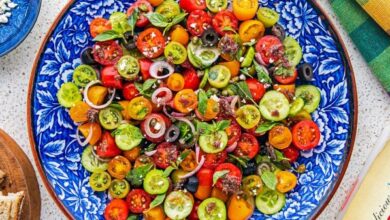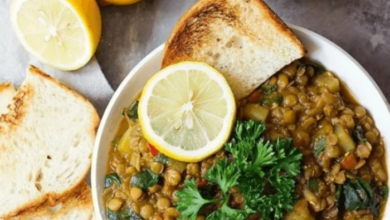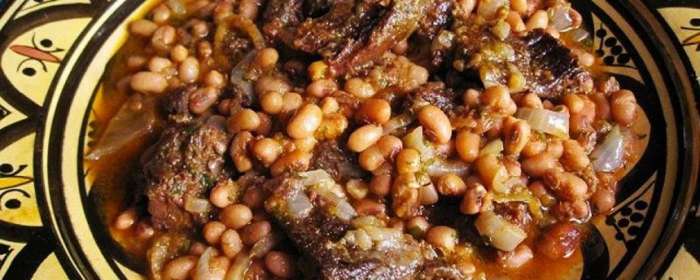
Reshteh Polo: Persian Noodle Rice, A Culinary Delight
Reshteh polo persian noodle rice, a dish that embodies the rich culinary heritage of Persia, is more than just a meal; it’s a celebration of flavors, textures, and cultural traditions. This beloved dish, featuring delicate rice interwoven with thin noodles, has been a staple in Persian kitchens for centuries, its history intertwined with the tapestry of Persian culture.
The dish is often served during special occasions, reflecting its symbolic significance in Persian society.
The origins of Reshteh polo can be traced back to ancient Persia, where it was likely a peasant dish, utilizing simple ingredients readily available. Over time, the dish evolved, incorporating influences from various cultures that interacted with Persia, resulting in the exquisite and flavorful Reshteh polo we know today.
Reshteh Polo
Reshteh Polo, a beloved Persian dish, is a testament to the country’s culinary heritage, showcasing a harmonious blend of flavors and textures. This dish, with its simple yet satisfying ingredients, is more than just a meal; it embodies the spirit of Persian cuisine, reflecting centuries of cultural exchange and culinary innovation.
Cultural Significance
Reshteh Polo holds a special place in Persian culture, symbolizing unity, prosperity, and togetherness. It is often served during special occasions, celebrations, and family gatherings, bringing people together around a shared culinary experience.
- Nowruz:The Persian New Year, celebrated on the spring equinox, is a time for family reunions and festive feasts. Reshteh Polo, with its symbolic long noodles representing longevity and prosperity, is a staple dish on the Nowruz table.
- Wedding Celebrations:Reshteh Polo is often served at Persian weddings, symbolizing the intertwining of two lives and the beginning of a new chapter. The long noodles represent a long and happy marriage.
- Religious Festivals:Reshteh Polo is also enjoyed during religious festivals, such as Eid al-Fitr and Eid al-Adha, adding to the celebratory atmosphere.
Historical Influences
The origins of Reshteh Polo can be traced back to ancient Persia, where rice and noodles were staple ingredients. The dish likely evolved over centuries, influenced by various cultures that interacted with Persia.
- Persian Influence:The use of rice, a staple grain in Persian cuisine, is central to Reshteh Polo. Rice cultivation has a long history in Persia, dating back to ancient times.
- Central Asian Influence:The inclusion of noodles in Reshteh Polo suggests a possible influence from Central Asian cultures, where noodles are a common food item.
- Chinese Influence:Some culinary historians believe that the use of noodles in Reshteh Polo may have been influenced by the Silk Road trade, which brought Chinese noodles to Persia.
Evolution and Popularity, Reshteh polo persian noodle rice
Reshteh Polo has undergone various adaptations over time, with regional variations emerging across Persia. These variations often involve the addition of different ingredients, such as herbs, spices, and vegetables.
- Regional Variations:In some regions, Reshteh Polo is prepared with a meat broth, while in others, it is served with a yogurt sauce. These variations reflect the diverse culinary traditions of Persia.
- Modern Interpretations:In recent years, Reshteh Polo has also been reinterpreted by modern chefs, who have incorporated contemporary techniques and ingredients to create new and exciting variations of this classic dish.
Ingredients and Preparation
Reshteh Polo, a comforting and flavorful Persian noodle rice dish, is a celebration of simple ingredients harmoniously combined. The key to its success lies in understanding the role of each ingredient and mastering the techniques for achieving the perfect texture and taste.
Ingredients
The ingredients for Reshteh Polo are readily available and can be found in most grocery stores. The list below provides a traditional recipe, but variations exist based on regional preferences and personal tastes.
- Rice:Basmati rice is the preferred choice for Reshteh Polo, known for its long grains and ability to fluff up beautifully. Other varieties, such as long-grain white rice, can be used as substitutes. The amount of rice will vary depending on the number of servings desired.
A general guideline is to use 1 cup of uncooked rice per person.
- Reshteh Noodles:These thin, flat noodles are essential to Reshteh Polo, adding a unique texture and a subtle flavor. Reshteh noodles are typically made from wheat flour and can be found in Middle Eastern grocery stores. Look for the type specifically labeled as “Reshteh” or “Reshteh Polo.” The amount of noodles used depends on personal preference, but a common ratio is 1/4 cup of noodles per cup of rice.
- Meat:A variety of meats can be used in Reshteh Polo, including lamb, beef, or chicken. For a traditional experience, lamb is often preferred. The meat is typically cut into cubes and browned in a pan before being added to the rice.
The amount of meat depends on personal preference and the size of the serving.
- Vegetables:Vegetables commonly added to Reshteh Polo include onions, garlic, and dried barberries. Onions are typically sautéed in oil until caramelized, adding a rich flavor to the dish. Garlic is added to the meat mixture for its pungent aroma and flavor.
Dried barberries provide a tangy sweetness and a vibrant color. Other vegetables, such as carrots, potatoes, or chickpeas, can be added based on personal preference.
- Spices:Reshteh Polo is seasoned with a blend of spices, including turmeric, cumin, cinnamon, and saffron. Turmeric gives the dish its signature yellow color and adds a slightly earthy flavor. Cumin adds warmth and depth. Cinnamon adds a sweet and aromatic note.
Reshteh polo, the comforting Persian noodle rice dish, always reminds me of warm family gatherings. It’s a meal that’s as much about the shared experience as it is about the flavors. The fluffy rice, tender noodles, and savory meat sauce make for a truly satisfying experience.
Speaking of comfort food, I recently stumbled upon a recipe for oma’s fabulous matzo ball soup that reminds me of the cozy feeling reshteh polo evokes. Both dishes are all about simple ingredients and a whole lot of love, creating meals that are both nourishing and heartwarming.
Saffron, known for its vibrant color and unique flavor, is used sparingly to enhance the dish’s complexity. The amount of spices used depends on personal preference.
- Salt:Salt is essential for seasoning the dish and enhancing the flavors of the other ingredients. The amount of salt used should be adjusted to taste.
- Oil:Oil is used for browning the meat and sautéing the vegetables. Vegetable oil, olive oil, or a combination of both can be used. The amount of oil used will depend on the size of the pan and the amount of meat and vegetables being cooked.
- Water:Water is used to cook the rice and to create a flavorful broth for the dish. The amount of water used will depend on the type of rice and the desired texture.
Preparing the Rice
The key to achieving fluffy and perfectly cooked rice lies in the rinsing and soaking process.
- Rinse the rice:Rinse the rice thoroughly under cold running water until the water runs clear. This removes excess starch and helps prevent the rice from sticking together during cooking.
- Soak the rice:Soak the rinsed rice in fresh cold water for at least 30 minutes. This allows the rice to absorb water, making it more evenly cooked and preventing it from becoming mushy.
- Cook the rice:After soaking, drain the rice and transfer it to a large pot. Add water to the pot, ensuring the water level is about 1 inch above the rice. Bring the water to a boil, then reduce the heat to a simmer and cover the pot.
Cook the rice for about 15-20 minutes, or until the water is absorbed and the rice is tender.
- Rest the rice:Once the rice is cooked, turn off the heat and let it rest for 10 minutes with the lid on. This allows the rice to steam and achieve its fluffy texture.
Preparing the Reshteh Noodles
Reshteh noodles are typically cooked separately from the rice.
- Cook the noodles:Bring a large pot of salted water to a boil. Add the Reshteh noodles to the boiling water and cook for 5-7 minutes, or until they are tender but still slightly firm.
- Drain the noodles:Once the noodles are cooked, drain them in a colander and rinse them with cold water to stop the cooking process.
Variations and Regional Differences: Reshteh Polo Persian Noodle Rice
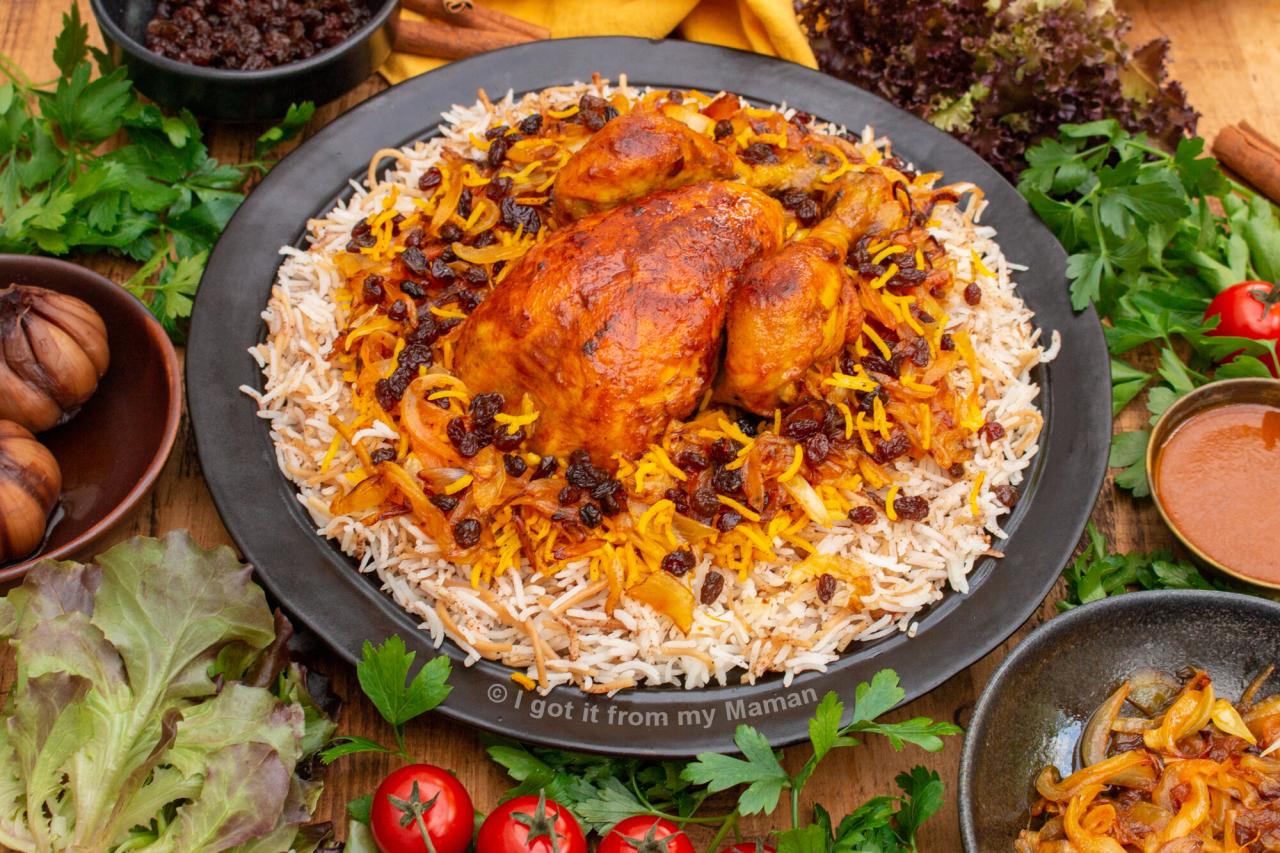
While the core recipe of Reshteh Polo remains consistent, regional variations and adaptations add a unique touch to this beloved dish. These variations are often influenced by local ingredients, culinary traditions, and personal preferences.
Regional Variations in Ingredients
The variations in Reshteh Polo are often seen in the ingredients used, particularly in the spices and garnishes.
- In some regions, like Isfahan, saffron is generously used to enhance the aroma and color of the rice.
- In other areas, like Shiraz, a sprinkle of cinnamon or cardamom is added for a more nuanced flavor profile.
- The choice of meat can also vary. In some areas, lamb is the preferred choice, while in others, chicken or beef are used.
- In some regions, the addition of dried fruits, such as raisins or barberries, adds a touch of sweetness and texture to the dish.
Regional Variations in Preparation
- The method of cooking the rice can also differ. In some regions, the rice is cooked in a pot with a layer of saffron water, while in others, the saffron is added to the rice after it is cooked.
- The amount of water used to cook the rice can also vary, depending on the desired texture of the rice.
- The meat is sometimes cooked separately and then added to the rice, while in other regions, it is cooked together with the rice.
- In some areas, the meat is marinated in yogurt or other spices before cooking, adding another layer of flavor.
Regional Variations in Presentation
- Reshteh Polo is often served with a variety of toppings and garnishes. In some regions, it is topped with a generous amount of fried onions, while in others, it is garnished with chopped herbs, such as parsley or cilantro.
Reshteh polo, with its delicate noodles and fragrant rice, is a dish that always reminds me of home. It’s a labor of love, requiring time and patience to achieve its perfect texture. But sometimes, you just need a quick and easy meal, like this quick and easy skillet lasagna recipe I found online.
While it’s a far cry from the complexity of reshteh polo, it still delivers a satisfying, comforting flavor. Maybe next time I’ll try incorporating some of the spices from my reshteh polo recipe into my skillet lasagna!
- The dish can be presented in different ways, with some families opting for a more traditional presentation, while others choose to present it in a more modern and visually appealing manner.
Reshteh Polo in the Diaspora
Reshteh Polo has also found its way into the cuisines of Persian diaspora communities around the world. In these communities, the dish has been adapted to incorporate local ingredients and preferences.
- In the United States, for example, Reshteh Polo is often served with a side of salad or a yogurt-based dip.
- In Europe, the dish may be adapted to include ingredients like feta cheese or olives.
Similarities and Differences with Other Dishes
Reshteh Polo shares similarities with noodle rice dishes found in other cultures. For example, the Chinese dish “chow mein” features noodles and rice, and the Japanese dish “yakisoba” also incorporates noodles and vegetables.
- The key difference lies in the specific ingredients and preparation methods used. Reshteh Polo uses a unique type of noodle, the “reshteh,” which is not found in other cuisines.
- The spices and flavors used in Reshteh Polo are also distinctly Persian, reflecting the culinary traditions of the region.
Serving and Accompaniments
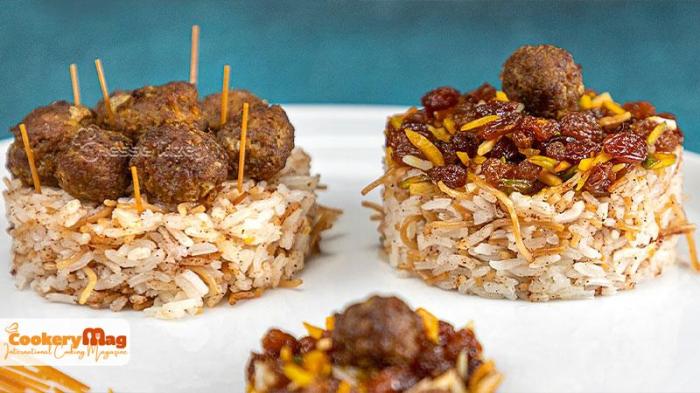
Reshteh Polo is a hearty and flavorful dish that is traditionally served in a communal manner, making it perfect for family gatherings or social occasions. The dish is often accompanied by a variety of stews, yogurt, and salads that complement its rich flavors and textures.
Traditional Serving
Reshteh Polo is typically served in a large, shallow dish or platter. The rice is arranged in a mound, with the noodles and meat distributed throughout. The dish is often garnished with chopped herbs, such as parsley or cilantro, and a sprinkle of saffron for a vibrant yellow hue.
The rice is usually fluffy and slightly sticky, providing a satisfying texture that contrasts with the soft noodles.
Reshteh polo, the Persian noodle rice, is a comforting dish that reminds me of home. It’s a perfect example of how simple ingredients can create a symphony of flavors. Sometimes, though, I crave something different, like a hearty breakfast casserole.
If you’re looking for a gluten-free option, this bacon breakfast casserole gluten free recipe is a winner. But, after indulging in that savory goodness, I always find myself drawn back to the delicate, comforting aroma of reshteh polo, a dish that never fails to satisfy.
Common Accompaniments
Reshteh Polo is often served with a variety of accompaniments that enhance its flavor and provide a balance of textures and tastes. Here are some common options:
- Stews:Reshteh Polo is often served with a rich and flavorful stew, such as gheymeh(a stew made with lamb or beef, split peas, and dried limes), fesenjan(a stew made with walnuts, pomegranate molasses, and chicken or duck), or khoresh-e bademjan(an eggplant stew).
These stews add a savory depth to the dish and provide a contrasting texture with the fluffy rice and noodles.
- Yogurt:A dollop of plain yogurt is a classic accompaniment to Reshteh Polo. The yogurt provides a refreshing and tangy contrast to the richness of the dish. It also helps to balance the flavors and provide a creamy texture.
- Salads:A simple salad, such as a green salad with tomatoes, cucumbers, and onions, can add a refreshing element to the dish. The salad provides a contrast in texture and flavor, and it also helps to balance the richness of the stew and the rice.
Regional Variations
The way Reshteh Polo is served and the accompanying dishes can vary depending on the region. For example, in some regions, the rice may be cooked with saffron, while in others, it may be flavored with turmeric or other spices.
Some regions may also serve Reshteh Polo with different stews or sauces, such as khoresh-e mast-o-moo(a yogurt and dill stew) or khoresh-e ghormeh sabzi(a stew made with herbs, kidney beans, and dried limes).
Culinary Significance and Cultural Impact
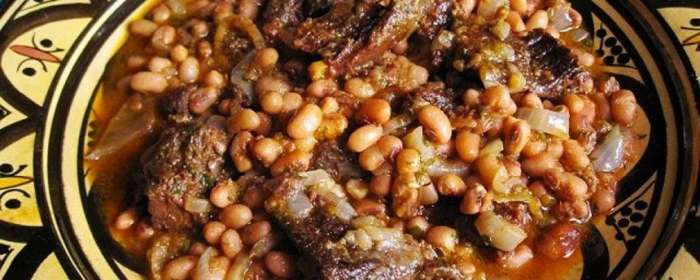
Reshteh Polo, a dish deeply woven into the fabric of Persian cuisine, transcends its role as a mere meal; it embodies a profound cultural significance that resonates through generations. Its popularity extends far beyond the borders of Iran, captivating palates worldwide with its comforting flavors and enduring appeal.
Role of Reshteh Polo in Persian Culture
Reshteh Polo is more than just a dish; it’s a symbol of tradition, hospitality, and familial bonds. Its presence is ubiquitous in Persian households, gracing tables during festive occasions, family gatherings, and everyday meals. It’s a dish that brings people together, fostering a sense of community and shared experiences.
- Family Gatherings:Reshteh Polo is a staple at family gatherings, particularly during celebrations like Nowruz (Persian New Year) and weddings. Its preparation often involves the entire family, creating a shared experience that strengthens familial ties.
- Social Events:The dish is also a common sight at social events, from casual get-togethers to formal dinners. Its versatility allows for customization to suit different tastes and preferences, making it a crowd-pleasing option for diverse gatherings.
- Religious Celebrations:Reshteh Polo holds a special place in religious celebrations, such as Ramadan and Eid al-Fitr. Its presence at these occasions underscores its significance in the cultural and spiritual life of Persian Muslims.
Reshteh Polo: A Culinary Journey
Reshteh Polo, a beloved Persian dish, is more than just a meal; it’s a culinary journey through time and tradition. Its history intertwines with the cultural tapestry of Persia, and its flavors evoke a sense of nostalgia and comfort. Join us as we delve into the heart of Reshteh Polo, exploring its origins, ingredients, preparation, and enduring legacy.
Visual Guide to Reshteh Polo
This visual guide will take you through the steps of preparing Reshteh Polo, from gathering the ingredients to plating the final dish.
| Ingredients | Preparation | Serving Suggestions | Image |
|---|---|---|---|
|
|
|
[Image of Reshteh Polo with ingredients and preparation steps.] [Image of a plate of Reshteh Polo with yogurt and fresh herbs.] |
“Reshteh Polo is a dish that brings people together, a symbol of warmth and hospitality in Persian culture.”
“The combination of rice, vermicelli noodles, and aromatic spices creates a symphony of flavors that is truly unique.”
“Reshteh Polo is a testament to the culinary ingenuity of the Persian people, a dish that has been passed down through generations.”

